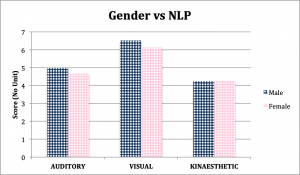For those of you who have come across the concept of Neuro-Linguistic Programming (NLP) before, a few ideas will automatically spring to mind.
NLP, which was created by psychologist Richard Bandler and linguist John Grinder in the 1970s in California, refers to humans’ innate preference to communicate and process information in one of three main ways: visual, auditory or kinaesthetic.
Although nowadays it is largely discredited from a scientific point of view, it is still adopted in training and coaching.
According to the latest statistics, the majority (60%) of people are visual, 20% are auditory, and 20% are kinaesthetic.
But when it comes to the microcosm of the call centre, where customer service advisors take hundreds of calls per day, do these percentages still add up? Or does what we are exposed to in life impact on our preferences?
We have tested the NLP representational systems of about 600 customer service representatives. We have discovered that most of them process information in visual terms, followed by auditory. The minority use a ‘physical language’ in their personal and professional life.
Although these results are, on the one hand, in line with more general data, on the other they are also surprising, because of the specific environment that we have considered. In fact, it would have been reasonable to think that a more significant number of CSRs were auditory, since they are required to have excellent listening skills.
Auditory people may be the most suitable for front-line telephone operator roles, but they do not seem to be the majority.
T2’s Behavioural Profiling Analysis Questionnaire helps identify the most ideal candidates for your contact centre. Get in touch to know more about our ultimate recruitment tool.
Back to Blog


